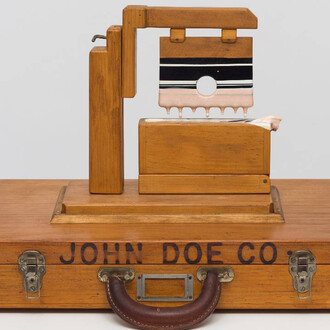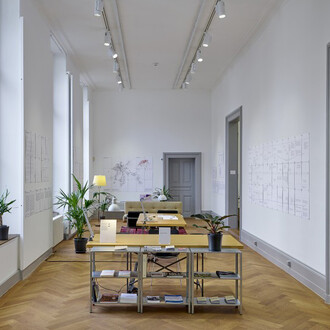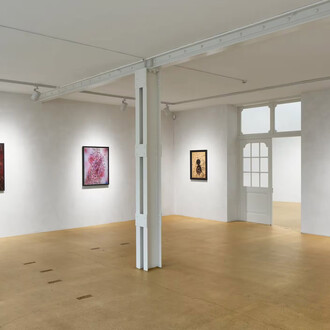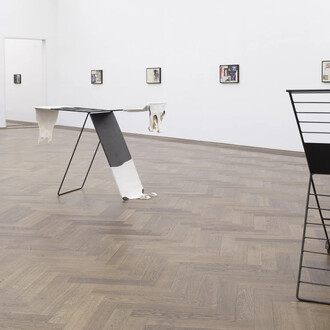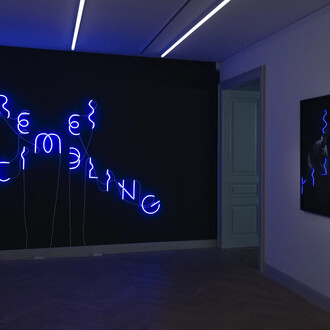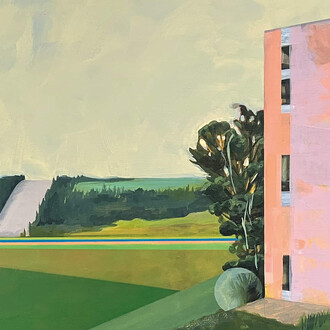‘The typology of wounds, the mapping of healing’ is Bangladeshi artist Ashfika Rahman’s first solo show in Europe. The exhibition presents new and existing photographic and textile works produced in Bangladesh in collaboration with marginalised indigenous communities in her home country.
Rahman’s practice originates from photography, a medium that she utilises to research and document marginalised and oppressed groups in her homeland. Evolving beyond documentation, the artist activates collaborations within specifically chosen villages to share their often sad and horrific experiences as a largely disenfranchised populous; communities whose histories and cultures are being erased by the harsh and violent policies and ideologies of the state and social elite of the country. The artist spends considerable periods of time with these people, producing bodies of work which bring these issues to the attention of her country and internationally, raising awareness about these alarming threats on humanity.
The body of work titled ‘Redeem’ was begun in 2020 and produced as a collaborative project engaging with the social issues surrounding mass religious conversion among indigenous communities in Bangladesh. The first work was exhibited at the Dhaka Art Summit 2020. ‘The typology of wounds, the mapping of healing’ presents the new second and third works in the series produced with the Santal and Dalit communities in Natore and Sirajganj respectively.
To produce these works, Rahman spends a significant amount of time with individuals within the villages, creating portraits and collaboratively sewing woven textiles from material sourced within the villages where they live, including disused saree. Each unique fabric work represents a map of the related community. The artist visits the land office for the area to find a map from 50 years ago, before religious conversions began. Rahman then talks to people in the community about the types of fabric they commonly use, selecting colour sections to represent different religious beliefs in the region, providing an indigenous spiritual colour theory hidden within it. Each stitch is made by individuals in the community and is representative of the tattoo marks on their body; the stitching signifying a personal ‘mark making’ on their own territory.
The Santal are one of the most ancient indigenous groups in Bangladesh but have historically been deprived of stately rights and privileges because of their isolated existence. The Dalit – translated as ‘deprived’ and academically applied to all low castes – is a group of religiously and socio-economically marginalised people who are deprived and forced to work under abominable conditions with the lowest return of their labour. ‘Redeem’ captures their customs, cultural and territory to celebrate their ways of life.
Presented in juxtaposition to the fabric works are two groups of six framed photographs of those individuals who live in the same communities and a single larger portrait, each containing an untranslated poem in the native language of the Santal stitched into the photograph. Written by the Father of the local church and used as a prayer by the community, this stitched poem translates as:
Our Father My Heart, My Life is dedicated to you You have all the rights My Heart, My Life is dedicated to you I am a poor human being I am small Creepers is our food Please provide us daily food This rice is dedicated to you This water is dedicated to you Forgive our Sin Protect us from bad influences Oh Our Father Your Holy Name My Heart, My Life is dedicated to you.
The poem is read or sung in church to praise God, ask for mercy and request to have food regularly. The artist finds irony in the words as they are not written by the individuals, but instead by the church that provides food, financial aid and hospitality in exchange for their religious conversion. These poems could therefore be seen as a sinister form of propaganda perpetuated through praise, justifying conversion with charity.
The second body of work presented in the exhibition is ‘The Power Box’, an ongoing series since 2016. ‘The Power Box’ is a photographic typological survey of televisions in the villages of communities in Chalan Bill, Bangladesh’s largest wetlands. With no electricity, the inhabitants’ televisions are operated by battery. Without satellite channels, they have access to only state-run channels, allowing for a significant amount of propaganda, and therefore political influence, to reach them. Rahman’s series portrays each television as a character, with an individual personality adorned with vibrant fabrics, rather than an object. The five previously unseen photographs are displayed over a wallpaper imitating their patterns.
Ashfika Rahman (b. 1988. Dhaka, BD) lives and works in Dhaka, BD. She has a Professional Diploma in Professional Photography from Pathshala, Dhaka, BD (2016) and a Professional Diploma in Photography from Hochschule Hannover, DE (2017). In 2018 she was selected for the Joop Swart Master Class by World Press Photo Foundation. Awards include Samdani Art Award (Finalist 2018 & 2020); New York Portfolio Review (2020); IPA Award (Finalist 2018); Leica Oskar Barnack Award (Nominated 2018). Rahman has exhibited in festivals and museums internationally including: Dhaka Art Summit (2018 & 2020), Dhaka, BD; Lumix Festival (2018 & 2020), Hannover, DE; Palais de Tokyo, Paris, FR; Chobi Mela X, Dhaka, BD; Jimei x Arles international photo festival, China; F3 - Freiraum for Fotografie, Berlin, DE; FORMAT International Photography Festival, Derby, UK; Alserkal Avenue, Dubai, UAE; Objectifs, Singapore; Indian Photo Festival, Hyderabad, IN; Muslin Festival, Bangladesh National Museum, Dhaka, BD; Bangladesh Art Week 2021, Dhaka, BD; Photo SCHWEIZ, Zürich, CH. Rahman is currently exhibiting in her first solo show in Europe ‘The typology of wounds, the mapping of healing’ at VITRINE, Basel, CH (Until January 2022). Upcoming projects include a presentation at X Museum, Beijing, CN. Over 2021, Rahman been awarded and participated in awarded the Stitching Screens grant by FICA and The Samdani Art Foundation; the Format Festival Open Call Award; POP UP project by Goethe Institute Bangladesh; Horizontal Project by Kaspersky; C3- community, Goethe institute, BD.









